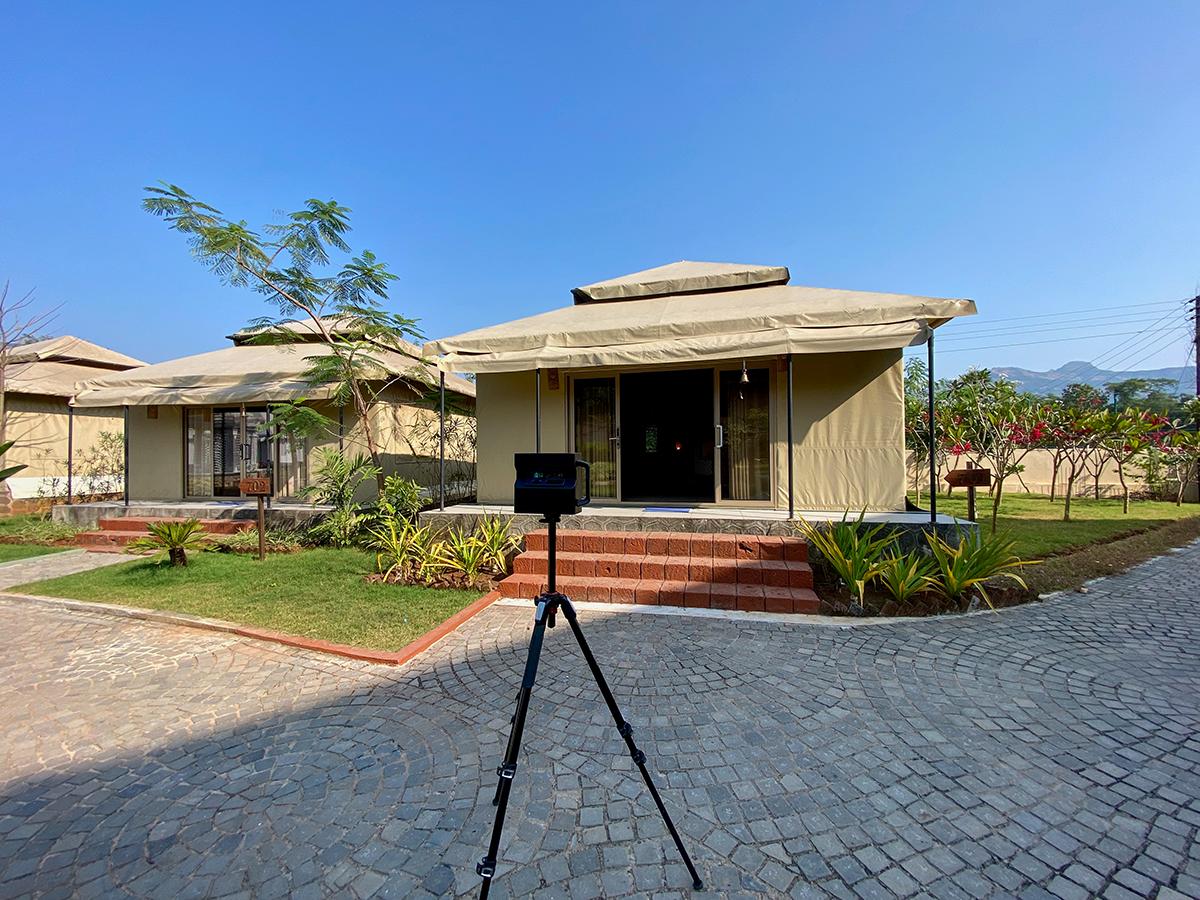The immersive "dollhouse" view is often seen as the hallmark of a Matterport tour, but the true foundation of the technology is the 360° panorama. This analysis deconstructs the 'magic' to reveal how a strategic understanding of the core components—2D imagery and 3D depth data—allows businesses to create more flexible, cost-effective, and future-proof digital assets.
From Pixels to Point Clouds: How a Digital Twin is Built
At the heart of every Matterport space is a series of panoramic images. When these images are uploaded to Matterport's Cortex AI engine, the software performs several key functions. Acting as a computational cartographer, it uses photogrammetry to analyze thousands of points within each panorama to understand its position relative to the others. When the panoramas are captured with a camera that also collects 3D data (like a Matterport Pro2/Pro3 or a LiDAR-equipped iPhone), Cortex uses this depth information to build the dimensionally-accurate 3D mesh for the dollhouse and floor plan views.
The Strategic Implication: The "Hybrid" Capture Model
Understanding this technical distinction allows for a more flexible and cost-effective "hybrid" approach to creating a digital twin. A business does not need to choose between a full 3D scan and a simple 360° tour; they can have both. A skilled technician can use a high-precision 3D camera for the dimensionally critical interiors and a more agile 360° camera for expansive outdoor areas, which are then seamlessly merged by the Cortex AI into a single, cohesive virtual experience.
| Capture Method | Best For | Key Features | Relative Cost |
|---|---|---|---|
| Full 3D Scan (e.g., Pro3) | Complex Interiors, Architecture | Dollhouse, Measurements, Floor Plans | $$$ |
| 360° Panorama (e.g., Theta) | Expansive Exteriors, Large Venues | High-Quality Walkthrough | $$ |
| Hybrid Model | Properties with Indoor/Outdoor Spaces | Best of Both Worlds | $$ - $$$ |
Case Study: The 360°-Only Walkthrough
The hybrid approach leads to a logical conclusion: in scenarios where dimensional accuracy is irrelevant, a complete and effective tour can be created using only 360° panoramas. This strategy is particularly effective for:
- Documenting expansive exterior amenities where a 3D mesh is unnecessary and often prone to failure.
- Rapidly capturing very large, open-plan spaces like convention halls where the primary goal is navigation, not measurement.
- Providing a cost-effective immersive experience for projects where the full suite of 3D features is not required.
The tour below serves as a practical example. It documents the amenity spaces of a residential complex in Girgaon and was created entirely from 360° panoramic images. Despite the absence of 3D data, it provides a seamless, high-quality walkthrough that effectively allows prospective tenants to experience the facilities. This demonstrates the flexibility of the platform and the importance of choosing the right capture method for the specific business objective.
The "Black Hole" Problem and a Niche Solution
A classic limitation of infrared 3D scanners is that water absorbs the infrared light, creating a void or "black hole" where a swimming pool should be. A niche feature within Matterport allows the Cortex AI to analyze a series of 360° panoramas of a pool and then generate an estimated 3D mesh to "fill" the hole with a representative blue texture. While this feature is often inconsistent on complex landscapes, it is highly effective for simple geometries like pools, solving a long-standing aesthetic issue. The tour below demonstrates this technique on a beach villa.
The Future Outlook: From Panoramas to Spatial Photos
The evolution of the panorama is the "spatial photo," a format popularized by devices like the Apple Vision Pro. A standard panorama is a 2D sphere of pixels. A spatial photo is a 3D sphere of pixels with depth data included. This means businesses capturing assets with 3D-capable devices today are creating future-proof archives. The depth data they collect can be repurposed to create truly immersive, three-dimensional photographic experiences for the next generation of hardware, long after the initial virtual tour has served its purpose.
Conclusion: From Component to Strategy
The 360° panorama is the unseen engine of immersive technology. Understanding its role and the interplay between 2D imagery and 3D depth data allows businesses to move beyond a one-size-fits-all approach. By adopting a flexible, hybrid strategy, they can create more effective and cost-efficient digital assets today while building a foundational library for the immersive web of tomorrow.
